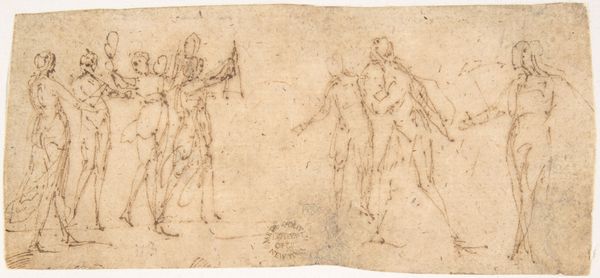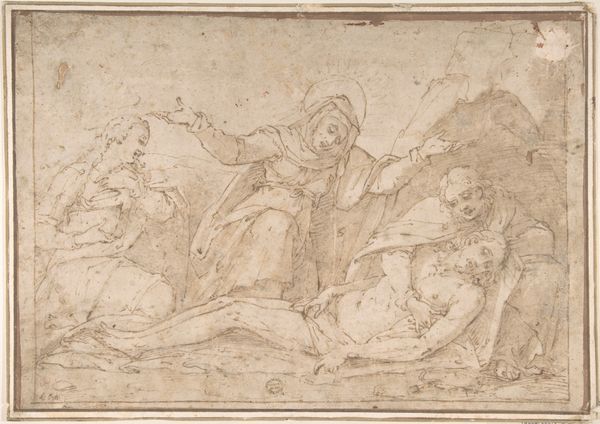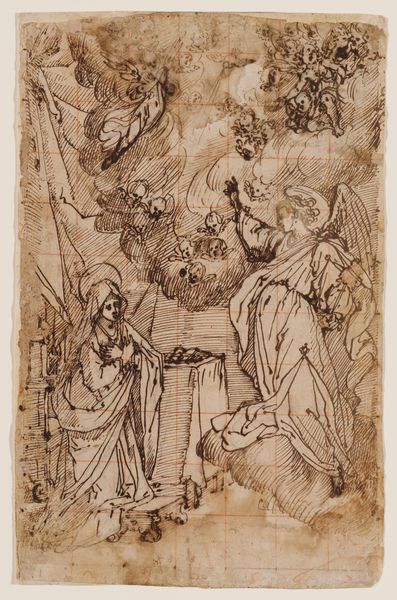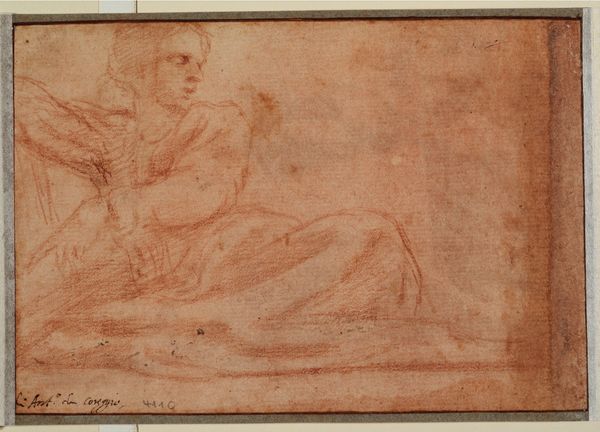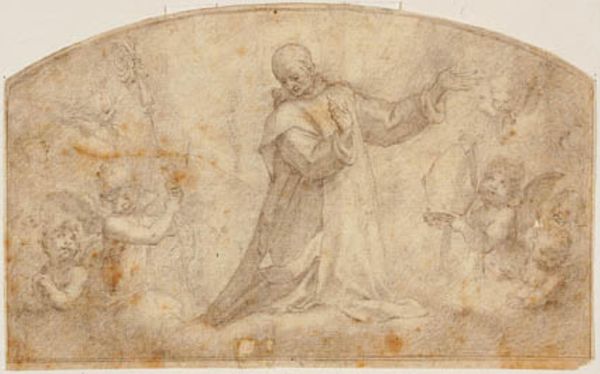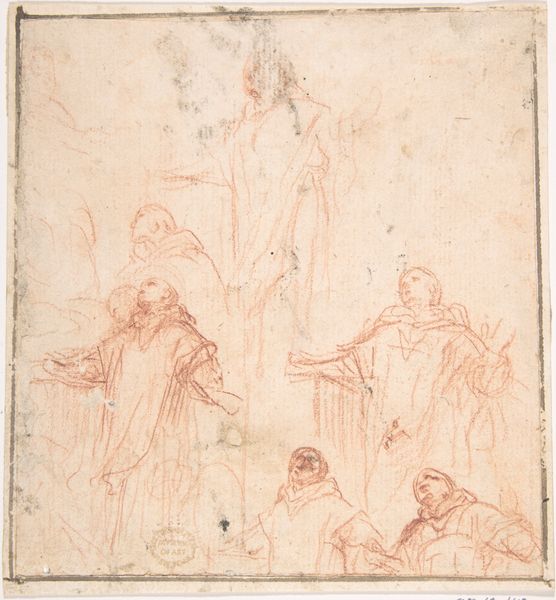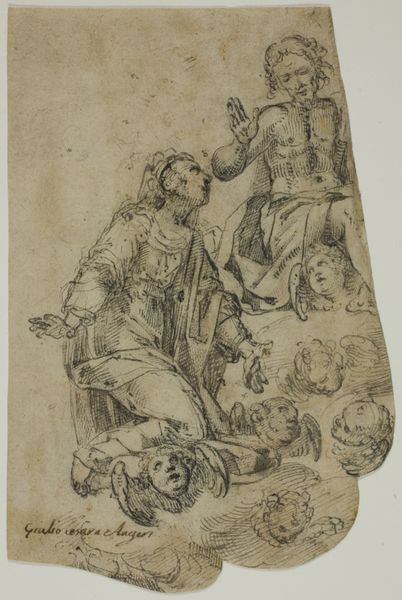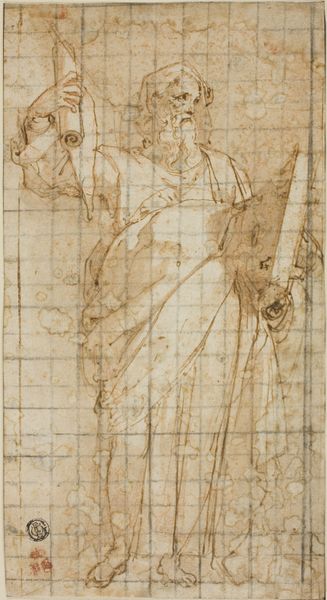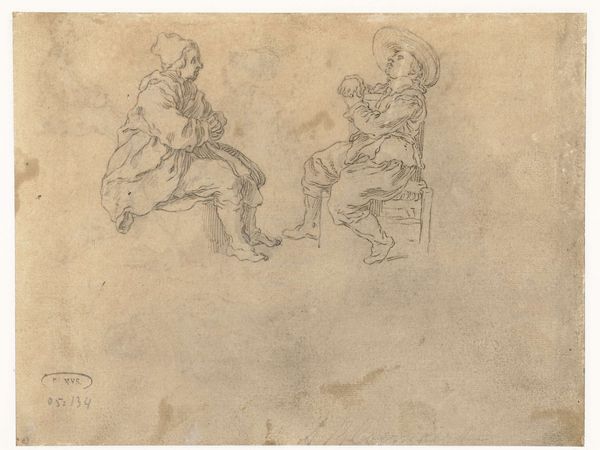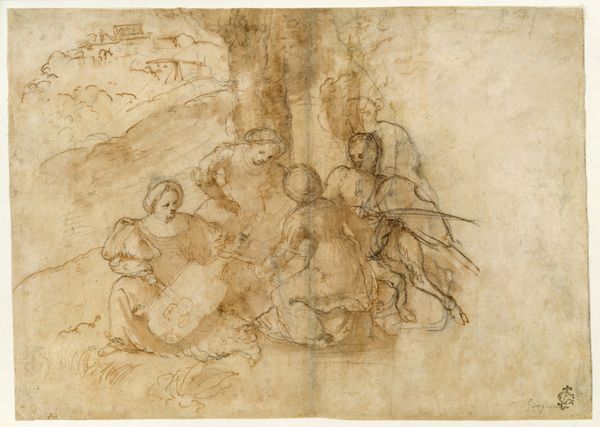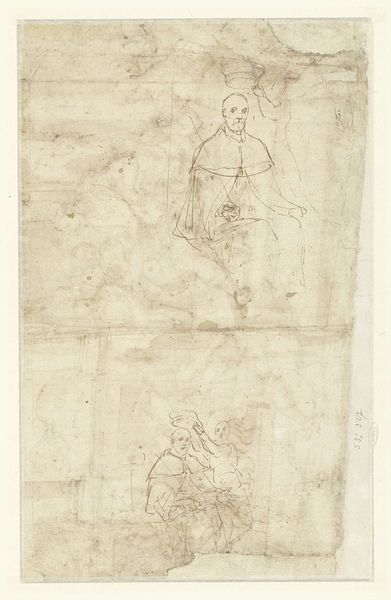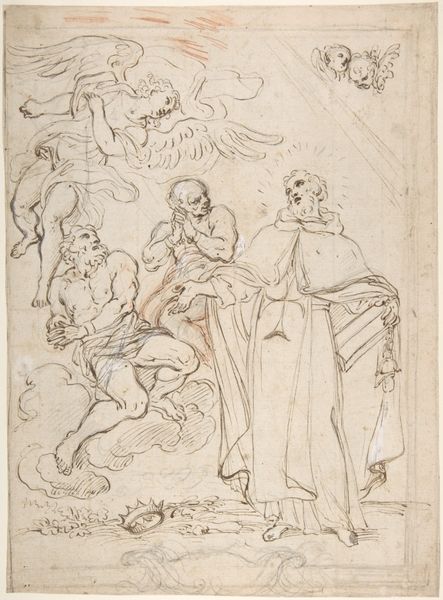
drawing, print, paper, ink, chalk, pen
#
drawing
#
medieval
#
narrative-art
# print
#
figuration
#
paper
#
oil painting
#
ink
#
chalk
#
pen
Dimensions: 87 × 209 mm
Copyright: Public Domain
Curator: This drawing, "Franciscan Saints in Adoration," presents us with an intriguing look into the artistic practices of its time. Currently, its author is unknown, though its creation certainly required considerable technical ability with pen, ink, and chalk on paper. Editor: My initial impression is one of hushed reverence. The monochromatic tones create a very meditative atmosphere, and the line work is so fluid, almost dreamlike. You can practically hear the whispers of prayer emanating from the drawing. Curator: Absolutely. Given its devotional theme, and that the piece shows Franciscan saints, it was likely originally commissioned to promote or celebrate a particular Franciscan church or order, especially in the medieval era when the Franciscans grew in influence. We must consider the role the Franciscans played as mediators in civic and personal religious lives. Editor: And how might this portrayal of collective worship have shaped the perceptions of religious life in the wider community? Was this meant as a reflection, a call to action, or maybe even a method of controlling or homogenizing displays of faith? The anonymity of the work becomes very compelling here; who were these artists making such politically charged choices about representation and religious doctrine? Curator: The anonymity points us back to a broader system. In the medieval and Renaissance workshops, often the master artist's identity took prominence while those contributing to the physical production remained nameless. Nevertheless, that sense of visual anonymity and group creation fits within larger concepts of communal religious identity. The figures are stylized, representative more than realistic. It shifts our understanding of who gets to have a face in these images. Editor: It’s really remarkable how a simple drawing on paper opens these wider discussions. It makes me wonder, in our contemporary image-saturated world, are we also producing similar works of collective and anonymous identity building? Curator: That’s an astute point! These drawings, originally situated in a very specific socio-religious context, force us to ask ourselves how institutions today use images to shape collective identities and beliefs. Editor: Thank you for illuminating the historical forces that helped produce such work! Curator: It's important we always ask the "so what" questions of historical artworks to help make better sense of where our cultural images come from and how these affect society, too.
Comments
No comments
Be the first to comment and join the conversation on the ultimate creative platform.
